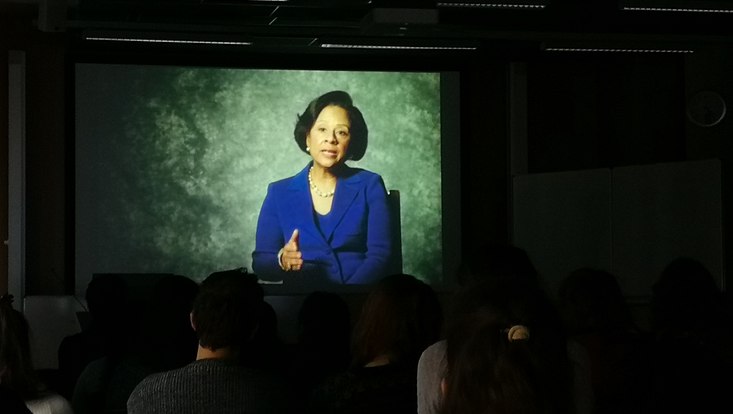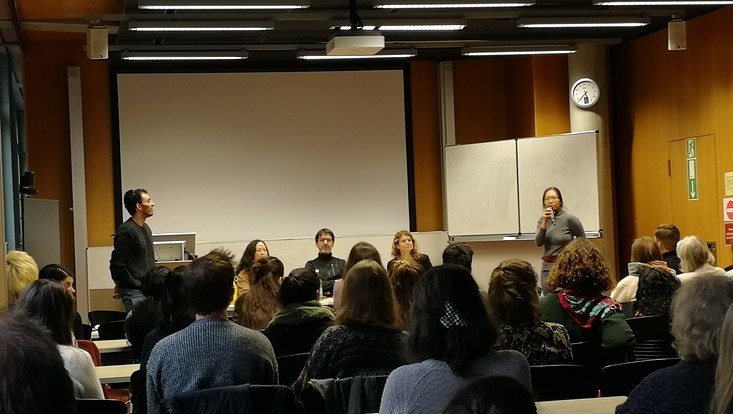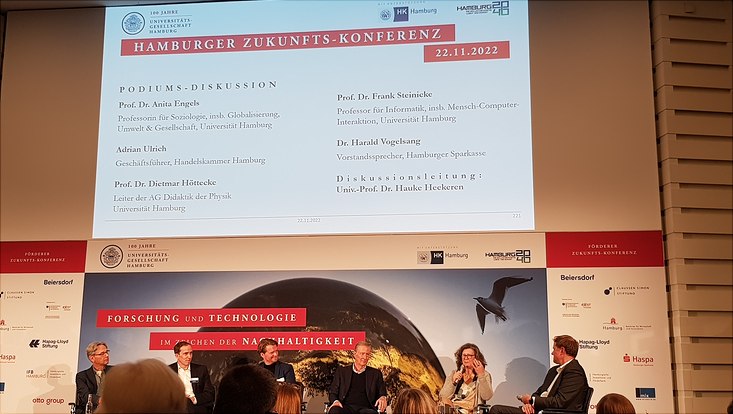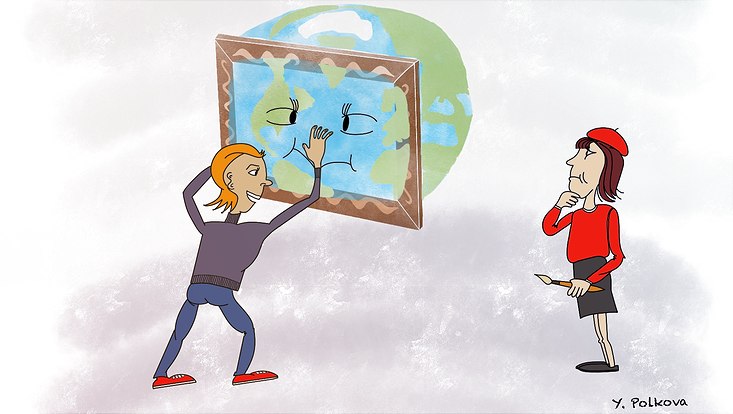Movie screening series: Women in science – from inequalities to leadership?
24 March 2023, by Céline Gieße

Photo: Céline Gieße
While the number of women who pursue a career in STEM (science, technology, engineering, and mathematics) fields is higher than ever, female scientists still face challenges to advance in their careers. Additionally, serious issues like harassment, bullying, and conscious and unconscious prejudices/discrimination frequently affect female scientists but such incidences typically are kept quiet. To encourage dialogue and raise awareness on these fronts, representatives of the graduate schools IMPRS-ESM and SICCS, the equal opportunity commission of the MPI for Meteorology, and the Gender & Diversity committee of the excellence cluster CLICCS joined forces to organize the screening of two documentaries addressing these problems, followed by discussion sessions.
The series started on the 21st of March with the screening of “Picture a Scientist”, a powerful and thought-provoking documentary that sheds light on the experiences of female scientists in STEM fields. The movie features the personal stories of three impressive female scientists – biologist Nancy Hopkins, chemist Raychelle Burks, and geologist Jane Willenbring – and highlights the struggles and challenges faced by women in science, including sexual harassment, gender discrimination, and the under-representation of women in leadership positions. The film uses the metaphor of an iceberg to highlight that only a small portion of the problem is visible (unwanted sexual attention, coercion, assault, etc.), while the bulk of more subtle forms of gender discrimination and sexual harassment (e.g., being ignored in meetings, not being invited to collaborate, not getting credit, inappropriate emails, obscene gestures, hostility, etc.) stays invisible below the surface. The movie also addresses the issue of the ‘leaky pipeline’ in STEM fields: While women are well represented at lower career levels, they are increasingly underrepresented as one moves up the ‘ivory tower’ of the academic career. Women often face barriers, such as unconscious gender bias, lack of mentorship and networking opportunities, and the need to balance career aspirations with family responsibilities, preventing them from advancing in their careers and forcing them to leave academia. The data underpinning the unconscious gender bias that we all have resulting from societal conditioning is striking: Men are more likely to be seen as competent, to be mentored or hired, and to receive a higher salary than women with the same qualifications. It can be eye-opening to become aware of one’s own unconscious biases, for example, by taking an Implicit Association Test developed by Harvard University. On a more hopeful note, the movie also shows that awareness is increasing and changes in culture are starting in parts of the academic system. “Picture a Scientist” is a powerful reminder of the important role that diversity and inclusion play in advancing scientific progress and discovery.

Photo: Céline Gieße
The movie screening was followed by a lively and interesting discussion with the audience and a panel consisting of IfM professors Eleanor Frajka-Williams and Dirk Notz, and Simone Rödder, a professor in Sociology of Science. The discussion touched on many facets of the topic of gender equality in science and personal experiences were shared. It was highlighted that power structures in academia with singular dependencies, for example in a student-supervisor relationship, are problematic and cause high vulnerability to harassment. Advisory panel systems with regular meetings, as established in the IMPRS and SICCS graduate schools, can be a good method of prevention, but the independence of the panelists involved must be ensured. Moreover, the pros and cons of gender quotas were discussed. While they help increase the representation of women, there are cases in which women are invited to job interviews, to serve on a committee, etc. just to fulfill a quota and not because they are a good fit. This can be a devastating realization and create unnecessary extra work for women. Another point of discussion was the importance of role models. Having female role models can be very empowering for young scientists. If female role models are lacking in their own institution, mentoring programs such as MPOWIR can be a valuable resource. Also having both a family and a successful academic career should be normalized, for example by bringing children to social events or conferences. It was further stated that not only women but also men can serve as role models and that their role in changing the academic culture is crucial. It is not sufficient for men to not discriminate or harass women. They need to be aware of the problems, speak up, and intervene in cases of subtle or obvious gender-based discrimination. In this context, many participants expressed frustration that the event was attended mainly by women and young scientists, with few male senior scientists.
Luckily, there is a second chance: On Wednesday, 29 March, the series continues with a screening of the movie “The Leadership” and a follow-up discussion.


